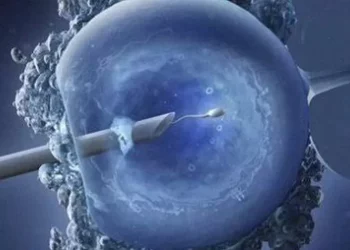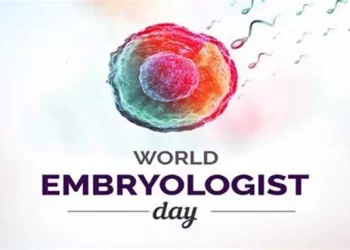Azoospermia, a medical condition characterized by the absence of sperm in the ejaculate, is a significant cause of male infertility. Approximately 1% of all men and 10-15% of infertile men experience azoospermia. This condition can be daunting for those affected, but understanding the underlying causes can provide a pathway to effective treatment and management. This article delves into the various causes of azoospermia, aiming to offer a comprehensive understanding of this complex condition.
See Also: Azoospermia: A Comprehensive Guide to The Different Types
Types of Azoospermia
Azoospermia is broadly categorized into two types: obstructive azoospermia (OA) and non-obstructive azoospermia (NOA).
Obstructive Azoospermia (OA): This type occurs when there is a blockage in the reproductive tract that prevents sperm from being included in the ejaculate. Despite normal sperm production in the testes, the sperm cannot reach the urethra.
Non-Obstructive Azoospermia (NOA): This type is due to a failure in sperm production within the testes. Various factors, including hormonal imbalances, genetic conditions, and testicular damage, can contribute to NOA.
Causes of Obstructive Azoospermia
Congenital Causes:
Congenital Absence of the Vas Deferens (CAVD): This genetic condition is commonly associated with cystic fibrosis. Men with CAVD are born without the vas deferens, the duct that transports sperm from the testes to the urethra.
Epididymal Obstruction: The epididymis is a tube that stores and carries sperm. Obstruction in this tube, which can be congenital or acquired, prevents sperm from passing through.
Acquired Causes:
Infections: Infections such as epididymitis or prostatitis can lead to scarring and blockages in the reproductive tract.
Surgery or Trauma: Surgical procedures, especially those involving the groin or pelvic region, can inadvertently damage or block the vas deferens or epididymis. Trauma to these areas can also result in obstructions.
Vasectomy: This is a surgical procedure for male sterilization that involves cutting or sealing the vas deferens to prevent sperm from entering the ejaculate.
Causes of Non-Obstructive Azoospermia
Genetic Factors:
Klinefelter Syndrome: This condition occurs when a man has an extra X chromosome (XXY). Men with Klinefelter syndrome often have small testes that do not produce sufficient sperm.
Y Chromosome Microdeletions: Deletions in certain regions of the Y chromosome can affect sperm production. The AZF (Azoospermia Factor) regions on the Y chromosome are crucial for spermatogenesis, and deletions here can lead to NOA.
Other Genetic Conditions: Conditions like Sertoli-cell-only syndrome, where the testes lack germ cells that develop into sperm, also fall under this category.
Hormonal Causes:
Hypogonadotropic Hypogonadism: This condition involves insufficient production of gonadotropins (LH and FSH) due to hypothalamic or pituitary dysfunction. These hormones are critical for stimulating the testes to produce sperm.
Hyperprolactinemia: Elevated levels of prolactin can inhibit the release of gonadotropins, thereby reducing testosterone levels and impairing sperm production.
Testicular Causes:
Varicocele: This is a condition characterized by enlarged veins within the scrotum, which can increase scrotal temperature and negatively impact sperm production.
Testicular Torsion: Twisting of the spermatic cord cuts off blood supply to the testes, potentially leading to permanent damage if not promptly treated.
Mumps Orchitis: Mumps virus infection can lead to inflammation and damage to the testes, affecting their ability to produce sperm.
Environmental and Lifestyle Factors:
Exposure to Toxins: Prolonged exposure to environmental toxins such as pesticides, heavy metals, and radiation can impair spermatogenesis.
Medications and Substance Abuse: Certain medications, including chemotherapy drugs, anabolic steroids, and recreational drugs, can adversely affect sperm production.
Lifestyle Factors: Obesity, excessive alcohol consumption, and smoking are known to reduce sperm production and quality.
Diagnosis of Azoospermia
Diagnosing azoospermia involves a thorough medical history, physical examination, and several diagnostic tests.
Medical History and Physical Examination:
History: The physician will inquire about any past illnesses, surgeries, infections, medications, and lifestyle factors that might contribute to azoospermia.
Physical Examination: This includes assessing the size and consistency of the testes, the presence of the vas deferens, and any signs of hormonal imbalances or genetic disorders.
Laboratory Tests:
Semen Analysis: A semen analysis is the primary test for diagnosing azoospermia. This test examines the ejaculate for the presence of sperm. If no sperm is found in the ejaculate, the test may be repeated to confirm the diagnosis.
Hormonal Profiling: Blood tests to measure levels of hormones such as FSH, LH, testosterone, and prolactin can provide insights into the underlying causes of azoospermia.
Genetic Testing: Genetic tests, including karyotyping and Y chromosome microdeletion analysis, are important for identifying genetic causes of NOA.
Imaging Studies:
Scrotal Ultrasound: An ultrasound can help identify structural abnormalities, such as varicoceles or testicular masses.
Transrectal Ultrasound (TRUS): TRUS can detect obstructions in the ejaculatory ducts or seminal vesicles.
Testicular Biopsy:
Diagnostic Biopsy: In cases of NOA, a testicular biopsy can help determine if sperm production is occurring within the testes. This procedure involves taking a small tissue sample from the testes for microscopic examination.
Treatment Options for Azoospermia
Treatment for azoospermia depends on the underlying cause and the type of azoospermia (OA or NOA). The goal is either to restore sperm to the ejaculate or to retrieve sperm for use in assisted reproductive techniques (ART).
Treatment for Obstructive Azoospermia:
Surgical Repair: Surgery can correct obstructions caused by blockages in the vas deferens, epididymis, or ejaculatory ducts. Procedures like vasovasostomy (vasectomy reversal) or epididymovasostomy can restore sperm flow.
Transurethral Resection of the Ejaculatory Ducts (TURED): This surgical procedure can remove obstructions in the ejaculatory ducts.
Treatment for Non-Obstructive Azoospermia:
Hormonal Therapy: For conditions like hypogonadotropic hypogonadism, hormone replacement therapy with gonadotropins or GnRH can stimulate sperm production.
Varicocele Repair: Surgical correction of varicoceles can improve testicular function and sperm production in some men.
Medical Therapy: Treatment of underlying conditions such as hyperprolactinemia or infections can restore sperm production.
Sperm Retrieval Techniques:
Testicular Sperm Extraction (TESE): This technique involves retrieving sperm directly from the testes. It is used in cases where sperm production is limited but present.
Microdissection TESE (micro-TESE): A more advanced technique, micro-TESE uses a surgical microscope to identify and extract areas of the testes that are more likely to contain sperm.
Percutaneous Epididymal Sperm Aspiration (PESA): This technique is used for men with OA, where sperm is aspirated directly from the epididymis.
Assisted Reproductive Techniques (ART):
In Vitro Fertilization (IVF) and Intracytoplasmic Sperm Injection (ICSI): These techniques involve injecting a single sperm directly into an egg to facilitate fertilization. They are often used in conjunction with sperm retrieval methods for men with azoospermia.
Psychological Impact and Counseling
The diagnosis of azoospermia can be emotionally challenging for men and their partners. The inability to conceive naturally can lead to feelings of inadequacy, stress, and depression. Therefore, psychological support and counseling are crucial components of managing azoospermia.
Emotional Support: Support groups and counseling can help men and couples cope with the emotional stress of infertility.
Fertility Counseling: Professional counseling can provide information on treatment options and help couples make informed decisions about their reproductive future.
Prognosis and Future Directions
The prognosis for men with azoospermia depends on the underlying cause and the treatment approach. Advances in microsurgical techniques and ART have significantly improved the chances of achieving biological parenthood for men with both OA and NOA.
Research and Innovations:
Stem Cell Therapy: Emerging research in stem cell therapy holds promise for restoring spermatogenesis in men with NOA.
Genetic Engineering: Advances in genetic engineering, such as CRISPR-Cas9, may offer future possibilities for correcting genetic defects causing azoospermia.
Novel Hormonal Therapies: Ongoing research into new hormonal treatments aims to enhance sperm production in men with hormonal imbalances.
Conclusion
Azoospermia, though a complex and multifaceted condition, is not insurmountable. Understanding its causes, from genetic factors to environmental influences, is crucial for effective diagnosis and treatment. With advances in medical science and reproductive technologies, many men with azoospermwith azoospermia can achieve their dreams of fatherhood. Continued research and innovation promise to further improve outcomes, offering hope and solutions to those affected by this challenging condition.
Related Links:



























